Final report for LNE17-355
Project Information
The two-year grant from the Northeast Sustainable Agriculture Research and Education (NE-SARE) funded an in-depth grazing management course for livestock farmers. This project allowed us to conduct a multiple 4-week courses to dive into the nuts and bolts of grazing management. The class series allowed farmers to study essential grazing principles and develop management plans for their operations. In addition, the grant project funded follow-up technical assistance to class participants as they implemented new practices.
Over the two-year project, we conducted classes in 5 locations, reached 31 farmers with planning and implementation on 1,600 acres. Farmers participated in this program across 7 Vermont counties and included 11 beef producers, 9 cow dairies, 6 goat dairies and 5 sheep producers. Six of the 31 farms entered into Natural Resource Conservation Service (NRCS) Environmental Quality Incentives Program (EQIP) grazing contracts. Those six projects resulted in conservation practice cost-sharing totaling $345,000.
In addition to obtaining funding for grazing implementation, grazing planning allowed farmers to identify farm goals and develop a strategy specific to their farm. Some were looking to better utilize the acreage that they had, others were developing a plan that involved expansion. In each case, in-class planning and calculations were tested in the field, and further adapted. Participants left with tools that can evolve with their farm management.
One farmer participant, Becca Knouss, of The Goat Project in Bennington, Vt had this to say:
“The pasture class offered by UVM Extension this spring was a total game changer for me… the class helped me to better systematically set up pastures so I was moving portable fencing in a more sensible manner. I was also able to learn how to calculate how much dry matter my goats required so I can better manage hay consumption in both the summer and winter months. I would like to add a most sincere thank you to all who were able to make this happen. I can't stress enough how helpful those 4 meeting truly were.”
SARE_Fall_2020_Grazing_wrap-up
Twenty-four livestock farmers complete a pasture management course and develop their own farm-specific grazing plans to gain an in-depth understanding of grazing concepts, which results in the implementation of new or improved grazing practices on approximately 1,920 acres and reduces feed costs per cow by $1.00/day during the grazing season.
Pasture is often one of the most under-utilized resources on the farm and a poorly managed pasture can be subject to overgrazing damage, soil compaction, and nutrient run-off, providing minimal feed value to livestock. Farmers who are not utilizing pasture effectively have higher production costs, primarily in stored feeds which run about 50 percent of the total cost of production (Ford and Hanson, 1994). However, with a paradigm shift by the farmer to understand pasture as a crop to be managed, livestock production can be supported by high quality forages at lower cost, while improving soil health and water quality. To achieve healthy pasture ecosystems, the farmer must understand the relationship between the soil, pasture plants, and livestock grazing behavior.
When farmers consider adopting new or improved grazing practices, they typically have a grazing plan written by a technical service provider, but rarely is it combined with extensive education or one-on-one continuing support that increases the likelihood of success. Without farmer investment or service provider support, an otherwise good plan may fail.
With the current downturn in milk prices forecasted through 2018, dairy farmers are looking to decrease input costs and reduce economic risks. Erratic weather patterns have increased the risk of relying on annual cropping systems. Under these pressures, livestock farmers who confine cattle or practice continuous pasture stocking are exploring management-intensive grazing strategies to reduce stored feed costs. Farmers who are grazing, but are not utilizing pasture effectively have higher production costs, primarily in stored feeds which run about 50 percent of the total cost of production. As farmers consider options for keeping their farms viable, there will be a need for more education of grazing management concepts so farmers can meet requirements to capture those premiums.
Farmer engagement in pasture planning is critical for successful implementation. The pasture management course is not designed to convince farmers to adopt grazing as a management practice if it is not a goal for their farm. The purpose is to provide a small group learning opportunity where farmers who are considering grazing as a new management practice and farmers who would like to improve their existing management can gain an understanding of the fundamental concepts and have an active role in the planning practice. The combination of classes and field days complement a one-on-one approach to develop a well-designed and well-managed system that collectively reduces barriers to farmer adoption and success.
Each farmer develops a plan tailor-made to their operation that accounts for differences in landowner goals, land base, soil type, forage species, livestock breeds and genetics and management practices. While each farm has a shared objective of maximizing forage intake through grazing, there are differences in application from farm to farm. Each plan focuses on practices that optimize livestock performance, pasture quality and dry matter yield, and the efficiency of forage utilization on the individual farm.
Ultimately, the implemented plan will meet each of the individual farmer’s quality of life goals as well as goals for the animals and land base. Eligible farmers can use the plan they create in class to apply for USDA Natural Resources Conservation Service (NRCS) funding to help cost-share a variety of grazing practices.
Cooperators
- (Educator)
- (Educator)
Research
Education
This project combines comprehensive education with one-on-one consulting to develop and implement a farm-specific individualized grazing plan. The pasture management course enables farmers to gain an understanding of grazing concepts from both economic and environmental perspectives. Each 12 hour course consists of weekly 3-hour sessions over the course of four weeks with classroom instruction and homework. In addition to the weekly lesson, each farmer, with assistance from UVM Extension staff, creates an individualized grazing plan that takes into account their own farm goals. During the grazing season, each farmer has the opportunity to have on-going on-farm consulting as they implement new concepts and fine-tune their systems.
Topics for the educational program include:
- Pasture plant identification of common grass, legume and forb species, looking at favorable growth conditions for each and how plants respond to grazing impact.
- Pasture nutrition and how it affects grazing behavior and overall intake and animal performance.
- Grazing management concepts such as measuring dry matter availability, determining paddock sizes, the concepts of stocking rate versus stocking density and overall acreage requirements.
- Soil health in pasture systems and the benefits of soil, forage and manure testing to understand nutrient cycling and nutrient management within pasture systems.
- Pasture system design to determine infrastructure needs and management techniques to avoid overgrazing damage, decreased carrying capacity and other negative impacts.
- Grazing record keeping systems and the benefits of monitoring and documenting activities
Milestones
200 hundred farmers learn about the pasture management course through a direct mailing and informational sessions at workshops and events hosted by the Champlain Valley Crop, Soil, and Pasture Team and other partner organizations.
200
120
January 15, 2019
Completed
January 15, 2019
Fliers were directly mailed to approximately 120 farmers in three counties (Addison, Rutland and Chittenden) to notify them of the grazing course opportunity. Additionally articles in the Champlain Valley Crop, Soil and Pasture Team newsletter reached a wider general audience of farmers, agency personnel and agribusiness service providers.
60 farmers attend one of four field days at pasture-based livestock farms that highlight improved grazing management practices. These field days provide opportunities for farmers who are not practicing management intensive grazing to see grazing infrastructure and concepts in the field.
60
20
5
June 14, 2018
Completed
June 14, 2018
On June 14, 2018 a field day was hosted at Islandacres Farm in South Hero. Farmer Steve Robinson recently transitioned to grazing and this was his second season managing animals on pasture. I co-hosted this event with grazing consultant Sarah Flack. Some of the topics discussed included transitioning annual crop land to perennial pasture crops, estimating pasture forage yield in the field, animal intake and grazing behavior, and funding sources for infrastructure needs. Steve played a key role in discussing his decision to change management practices and what the challenges and benefits have been during the transition.
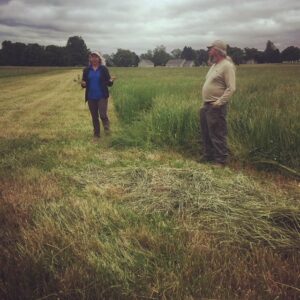
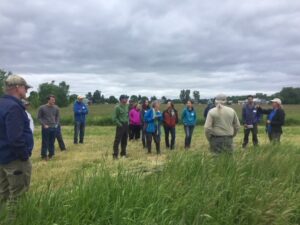

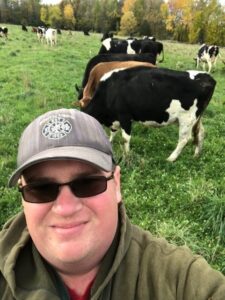
28 farmers enrolled in the pasture management class (5 courses offered over a 2 year period) and complete weekly lessons on pasture plant identification, pasture nutrition, grazing management concepts, and system design and infrastructure requirements. Over the course of 4 weeks, farmers spend 12 hours utilizing the concepts presented to adapt the ideas to their own farms. On-site one-on-one farm visits were also conducted with participants for additional technical assistance on planning and implementation.
28
31
March 07, 2019
Completed
April 04, 2019
The grazing class series was conducted on the following dates and locations:
December 7, 14, 21, 2017, January 4, 2018 - Middlebury, VT
January 18, 25, February 1, 15, 2018 - Pawlet, VT
October 18, 25, November 1, 8, 2018 - Middlebury, VT
March 5, 12, 19, 26, 2019 - Rutland, VT
March 7, 21, 28, April 4, 2019 - St. Albans, VT
In all, 5 course series were completed, with 20 total classes from Fall 2017 thru Spring 2019. A total of 31 individual farmers participated representing cow dairy, goat dairy, beef, and sheep operations on a total of 1,600 acres. The initial intent was to conduct the courses in Middlebury (Addison county) and the Rutland area. However, in January 2019 I was approached by the Franklin county conservation district to add a class series in that region. Through this collaboration, we were able to reach 6 more farms who attended the class in their local area (St. Albans).
SARE_Fall_2019_Grazing_wrap-up
I was able to conduct follow-up farm visits with 28 of the 31 class participants, and I visited 11 of the farms more than once. Farm visits involved planning/technical assistance on both minor and major changes and improvements, as well as discussion of funding options - federal, state or self-funded. Depending on the farmers experience level with grazing we covered topics such as on-site plant ID, calculated dry matter availability in the pasture, evaluated quality based on phase of growth, looked at and discussed animal grazing behavior, animal body condition, fencing options and/or layout, types of portable fencing and posts, energizing the fence appropriately, grounding systems, water sources, layout of pipeline, size of water tubs needed, various fittings available/needed, pasture renovation strategies, seeding rates, and seed varieties.
263 complete the course having developed a written grazing management plan meeting Natural Resources Conservation Service (NRCS) standards. These farmers use their completed plan to implement one or more improved practices.
26
31
March 07, 2019
Completed
April 04, 2019
As of September 2019, six farms who completed the course enrolled in and received USDA NRCS EQIP (Natural Resource Conservation Service Environmental Quality Incentives Program) funding totaling $357,000 in cost share payments towards improved grazing practices. Additionally, farmers also made smaller adjustments and improvements on their own without federal or state dollars. Examples of this include using more temporary polywire fencing to increase the number of paddocks, moving animals more frequently and increasing recovery times (more intensive management), and adding water line and water tubs.
Below are two farmer quotes about self-funded improvements they made and the resulting benefits:
"We've put up over 3600 feet of poly pipe this season with two separate lines, it's been working out great! In late July the fields were getting pretty darn dry, but things have been greening up, and we've been getting lucky with evening and late afternoon showers at night. We spent $910 for the pipe, fittings, and valves for buckets. Installing was super easy, and we did it over the course of two afternoons. Our grazing season this year was about 120 days, we wish it was closer to 160, but its really hard at this altitude. I estimate that we saved at least an hour a day compared to the previous grazing season where I was hauling water 2 times a day. 120 hours x minimum wage $10.50 per hour is $1260 in saved labor. That is bare minimum, our time doing other things is probably twice that. We estimate to be saving $15 a day in feed costs, $1800 total for the grazing season. We probably saved $210+ or more compared to last season by extending our grazing season as well." - C. Beckwith, Goshen, VT (goat dairy and value-added processor). The total savings in labor and feed is estimated at approximately $3,270 for this 30-goat dairy, or $109 per animal, or $0.90 per animal per day over the course of the grazing season.
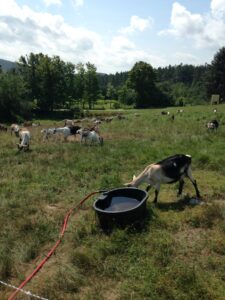
"The cows moved back onto the pastures on May 23. I will say I was armed with a lot more information so felt I had a better understanding of what I needed to accomplish. I did increase number of days in pasture, and it probably would have been even longer if we did not have that snow storm in November (we moved them the day before it arrived). Increase was 2 weeks. Doesn’t sound like a lot, but it was huge to me!" - H. Mooney, Waitsfield, VT (beef producer). The total savings in feed for that 2 week period was $880, or $63 per day, or $2.09 per animal per day.

2 farmers host field days to highlight newly implemented grazing practices
2
2
August 15, 2019
Completed
July 23, 2019
Two pasture walks were held in June and July 2019 to highlight completed projects. Both host farmers participated as students in the the grazing classes.
The first was held at the Chalker Farm in Vergennes, VT on June 26, 2019. Participants were able to see newly installed infrastructure on this 70-cow dairy including animal trails, fence, water tubs and a cattle underpass to connect pastures on either side of a busy highway. This farm is moving towards a system of management-intensive grazing and discussion among participants included a lot of technical how-to's and discussion of grazing behavior, dry matter intake and milk production.
The second event was held at the Plew Farm in Mt. Holly, VT on July 23, 2019. On this diversified livestock farm, participants saw management-intensive grazing of beef cows. In depth discussion of grass-fed beef production including genetics, body condition, forage intake and forage quality were covered. We also discussed potential small improvements the producer is considering including an improved animal trail to the barn/holding area and expanded an pipeline system and the benefits of those. Additionally we were able to see pastured poultry production and the impacts of fertility from the mobile coops in this multi-species grazing system.
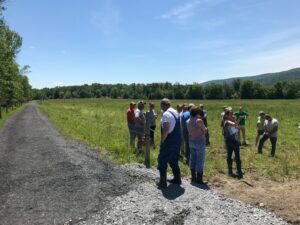
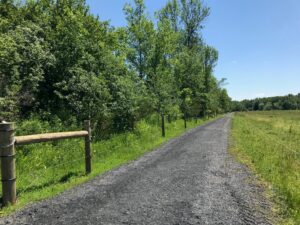
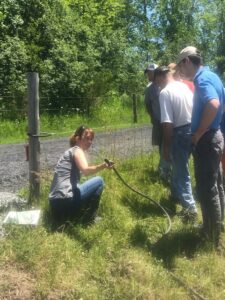
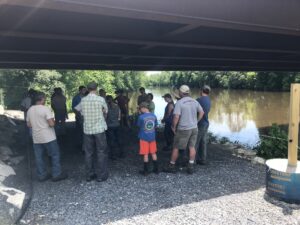
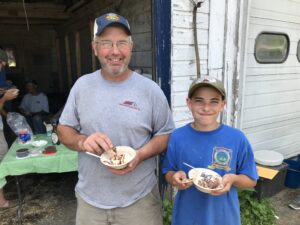
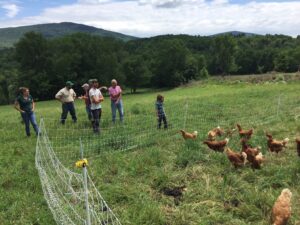
24 farmers keep detailed grazing management records to document increases in grazing season length and increases in dry matter intake from pasture, which can then be used to calculate savings in stored feed costs
24
22
August 30, 2019
Completed
August 30, 2019
While 31 farmers participated in the program, I was only able to document grazing records actively kept on 22 operations. This is due in part to the fact that some farmers who took the grazing course in 2019 would be applying for and seeking cost share funding before major improvements could be made. Therefore, for some farms, management was not yet in place during the 2019 season to document rotational grazing practices.
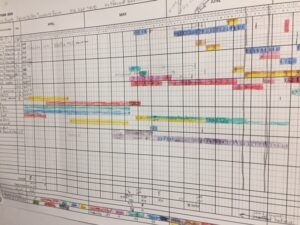
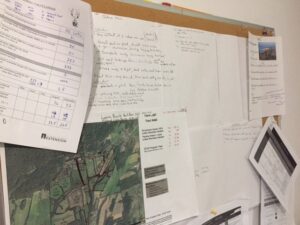
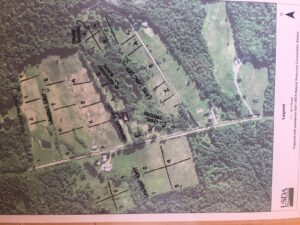
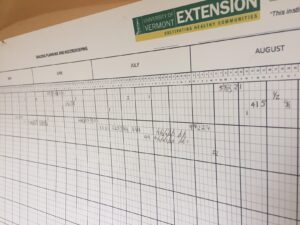
Attached are two articles that document major improvements made by two farmers Dylan Barrows in Ferrisburg, VT and Hilda Fisk in Danby, VT. Both farmers made radical changes to their management and the benefits to both the land and farm economics are described in each.
Milestone Activities and Participation Summary
Educational activities:
Participation Summary:
Learning Outcomes
I conducted one-on-one site visits on 28 of the 31 farms. I met with each farmer for 1.5-2 hours and also conducted follow-up visits on 11 operations. Through these visits I was able to discuss the farmers' new ideas and plans, or visibly see the changes and improvements they had implemented already (as noted in some of the examples and testimonials provided). Many of these changes centered around strategies to increase dry matter intake from pasture and increase the length of the grazing season through management. Timing of animal movement/occupation periods, paddock sizing, and pasture plant recovery periods were where the biggest changes in knowledge were noted.
Performance Target Outcomes
Target #1
24
adopt grazing management practices that result in efficiencies and cost savings
na
feed costs decrease by at least $1.00 per head per day
22
increased number of paddocks, shortened occupation periods, increased recovery period of paddocks, included more acres in grazing system, installed new infrastructure
na
participants noted either an increase in the overall grazing season, cost savings in stored feeds, or both
Dylan Barrows used the grazing plan he developed in class to apply for NRCS EQIP funding for his beef operation. He was awarded a contract for fence, pipeline, seeding, an animal trail and crossing on his 200 acre farm. He switched to daily moves and higher stock densities with noted pasture and animal performance improvements.
Barrows_Grassfed Beef Effectiveness
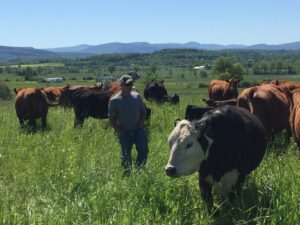
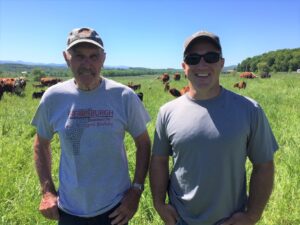
Dairy farmer Hilda Fisk used information learned in class to increase her grazing intensity to every other day moves. She used polywire to fence additional hay fields to increase her overall acreage that could be grazed. Her paddock numbers have increased from 5 to 22 in the past 3 years. This producer reported feeding 7 pounds less of grain per cow per day during the grazing season, plus large savings in corn silage and haylage. She reported, 'this is the cheapest milk I've ever made'.
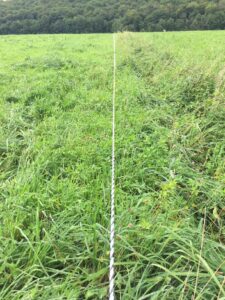
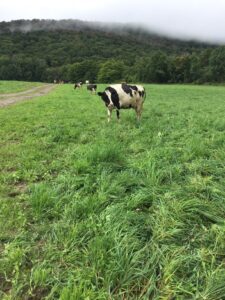
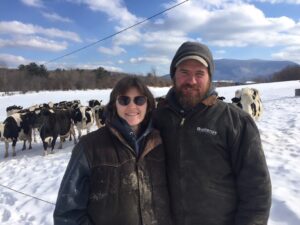
Dairy farmer Linda Stanley and her daughter Claire, who have been grazing for 20+ years attended the grazing class to intensify their management a bit and make a few small changes. They increased the number of paddocks on their pastures and extended their water pipeline to add an additional water tub for more efficient grazing. They also added pasture clipping this year, which kept pastures more vegetative and in a dairy-quality phase of growth while also helping to reduce weed pressures.
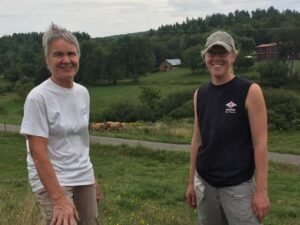
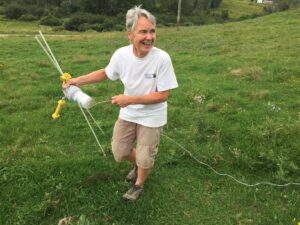
Example testimonials from other producers who participated in the course:
"I am so excited about how rotational grazing is going! I’ve created 23 paddocks for the milking herd. They have been out on the first 3 for 3 days— but I think they are more eager and I will run them through for two days on the next few. They are coming in with full rumens and barely touching their hay. For the first time ever they are absolutely excited about being out in the pasture and wait by the gate (even when the grass is still wet). In years past it was always a chore to get them out to pasture. I’ve figured out an easy system and things are going great. It’s been so much fun observing them and what they choose to eat." - A. Braxmeier, Manchester, VT (goat dairy)
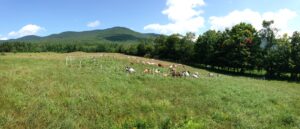
"We've made some progress and installed 1600 feet of poly pipe water line along our big field. Also upgraded our stock tank with an auto fill valve. There are 5 spigots along the water line where we can connect our hose to. We're enjoying this new system so much, we're going to get enough poly pipe to do the other side of our property and we'll be 100% covered with automatic water for the goats! It's such a huge change compared to last season when I was hauling 60 gallons out to the goats each day. I think we have some nice orchard grass growing along the road side. The paddocks with large amounts of this grass seems to give the girls a boost in milk production for the day. We are also noticing lots of vetch coming in in this field where there was none at all last year. The fields are already showing a difference compared to last year." - C. Beckwith, Goshen, VT (goat dairy)
A follow-up on some cost savings from this same producer:
I estimate that we saved at least an hour a day compared to the previous grazing season where I was hauling water 2 times a day. 120 hours x minimum wage $10.50 per hour is $1260 in saved labor. That is bare minimum, our time doing other things is probably twice that. We estimate to be saving $15 a day in feed costs, $1800 total for the grazing season. We probably saved $210+ or more compared to last season by extending our grazing season as well." The total savings in labor and feed is estimated at approximately $3,270 for this 30-goat dairy, or $109 per animal, or $0.90 per animal per day over the course of the grazing season.
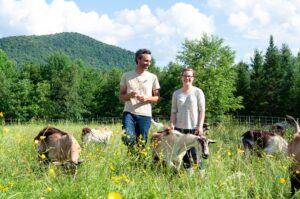
"The contract we have with the NRCS is enabling us, through the construction of a laneway and waterlines, to graze with our dairy herd some far away fields which extend the length of our grazing season considerably. As a 100% grass-fed dairy this is extremely vital to our operation. We were also able to build permanent fence to keep cows out of sensitive areas, thus protecting water quality." - A. Schatz, Hinesburg, VT (cow dairy)
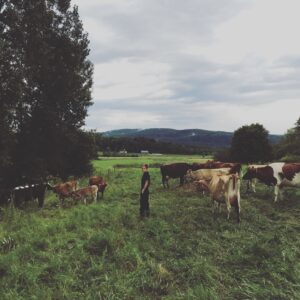
"A few weeks after completing the Grazing Class, we welcomed 15 two-month-old lambs to our property. Thanks to the principles I learned in class, we were able to put together a grazing plan and an overall strategy before the lambs arrived. We rotate the lambs onto fresh pasture every morning and pay attention to things like plant height, pasture quality and paddock size. The class served as a foundation for what we are putting into place now. It was affordable, small in class size, personalized to our individual farm, came with detailed materials we could refer back to down the road, and even included a farm visit to see how our efforts were paying off. Programs like these are instrumental in helping Vermont farmers succeed." - C. Cassidy, Fairfield, VT (sheep producer)
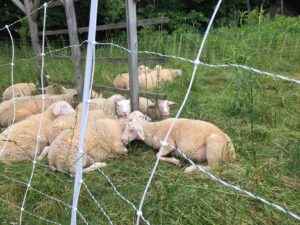
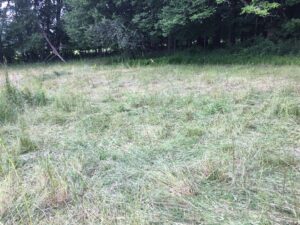
"The pasture class offered by UVM Extension this spring was a total game changer for me. Previously my pasture rotations were scattered and not very well planned. But the class helped me to better systematically set up pastures so I was moving portable fencing in a more sensible manner. I was also able to learn how to calculate how much dry matter my goats required so hopefully I can better manage hay consumption in both the summer and winter months. I would like to add a most sincere thank you to all who were able to make this happen. I can't stress enough how helpful those 4 meetings truly were." - B. Knouss, Bennington, VT (goat dairy)
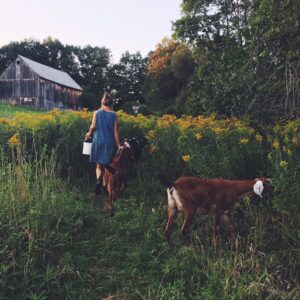
"The cows moved back onto the pastures on May 23. I will say I was armed with a lot more information so felt I had a better understanding of what I needed to accomplish. I did increase number of days in pasture, and it probably would have been even longer if we did not have that snow storm in November (we moved them the day before it arrived). Increase was 2 weeks. Doesn’t sound like a lot, but it was huge to me!" - H. Mooney, Waitsfield, VT (beef producer). The total savings in feed for that 2 week period was $880, or $63 per day, or $2.09 per animal per day

"Our business is transitioning from a conventional dairy farm to a grass-based cow-calf business. The class was extremely helpful in both developing a grazing plan and learning about grazing methods. It was great to connect with other open mind producers and toss around ideas about our businesses. The class prepared me to apply for financial assistance for infrastructure and have the support necessary to make the project move forward." - R. Orr, Orwell, VT (cow-calf beef producer)
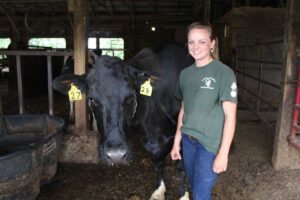
SARE_Fall_2019_Grazing_wrap-up
Additional Project Outcomes
As of September 2019, six farms who completed the course enrolled in and received USDA NRCS EQIP (Natural Resource Conservation Service Environmental Quality Incentives Program) funding totaling $357,000 in cost share payments towards improved grazing practices. These practices include high tensile and temporary polywire fencing, pipeline and water tubs, animal trails/laneways, stream crossings, pasture seeding/renovation, and grazing incentive payments.
As part of another grant project with Ben & Jerry's, I and my collaborators on that project, will be able to offer this developed curriculum to the membership of the St. Albans Coop/Dairy Farmers of America for a winter meeting/series in 2020.